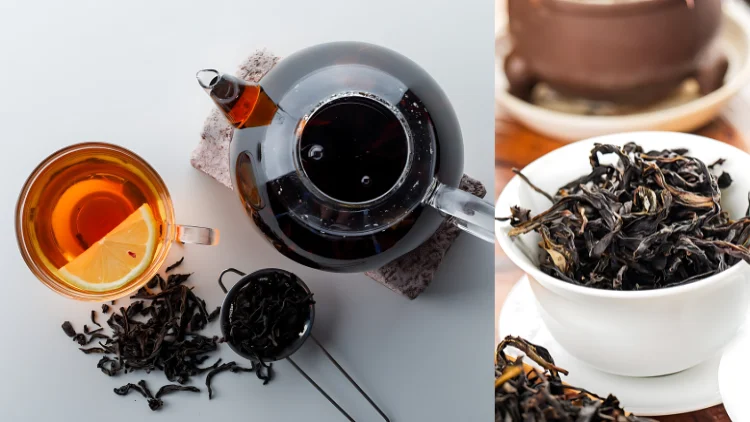Well, folks, let’s sit down and talk tea. Today, we’re looking at something called “oolong tea.” Now, folks often get a bit mixed up about this oolong—is it a black tea, or is it some other kind of fancy tea? So let’s clear that up today!

So, is Oolong Black Tea?
Now, this here oolong tea, it’s not quite black tea, and it’s not green tea either. It’s sort of its own thing, you know? I’d say it’s like oolong has its own little corner in the tea family. You see, black tea, well, it’s fully fermented. Green tea, that one hardly gets fermented at all, just a quick little dry-up. But this oolong, it sits somewhere in the middle. It’s a little fermented, but not all the way. Some oolongs taste more like black tea, while others taste more like green tea. All depends on how much they let it ferment. So, no, oolong ain’t exactly black tea.
What Is Oolong Tea Made From?
Now, don’t get confused. Oolong tea comes from the very same plant as black and green tea—the good ol’ Camellia sinensis. It’s like a magic plant that can turn into all sorts of teas! They just pick the leaves and then, depending on how they treat those leaves—drying, fermenting, rolling, you name it—they get different kinds of tea. So when it’s made into oolong, it’s processed in its own special way to get that special oolong taste.
How Is Oolong Tea Processed?

Here’s the thing, though. Oolong tea leaves go through a bit of a dance, you could say. They’re not left all fresh like green tea leaves, but they’re also not fully aged like black tea. Instead, they get a partial fermentation. Some oolong teas are just lightly fermented and come out a bit green and fresh-tasting, while others get fermented longer, which makes ‘em darker and richer in flavor.
Now, let me break it down even simpler. With oolong, they take the leaves and roll ‘em up, twist them around, and even shake them up a bit. This process helps bring out a taste that’s nice and deep, with a touch of sweetness. You’ll get this flavor that’s kind of roasted and nutty, or even a little bit fruity, depending on which oolong you’re sippin’ on. Some of it can taste pretty close to black tea, but it’s just not quite the same thing.
Is Oolong Good for You?
Now, I’m no doctor, but folks say that oolong tea can be good for ya. They talk about it maybe helping with all sorts of things, like metabolism and focus. Some even think it helps with keeping a good mood, too. And, of course, like other teas, oolong’s got those little antioxidants that everyone’s talking about these days. Those are the things that help the body, you know, fight off the bad stuff.
How to Enjoy Oolong Tea

If you’re curious to give oolong a try, well, you can find it loose leaf or in tea bags. You’ll want to brew it just right, though—not too hot, not too cold. Let the water cool down a bit after boiling, so you don’t burn the leaves. A few minutes is all it takes, and there you go, a nice, warm cup of oolong.
Some folks even re-use the same leaves for a second or third brew, since oolong leaves can be steeped a few times without losing their taste. So it’s a good value if you’re looking to get the most out of it!
Where to Buy Oolong Tea?
Oh, these days you can find oolong tea all over. You can order it online, or even find it at a local grocery store. And they’ve got all sorts—organic oolong, flavored oolong, loose leaf, bagged tea, you name it! Prices can range depending on the quality, but you can find a decent one without breaking the bank.
So next time someone asks you, “Is oolong black tea?” you’ll know just what to tell ‘em. No, it’s not black tea. Oolong is its own unique tea, sitting right in between black and green tea, with a flavor all its own. Give it a try—you might just find yourself a new favorite tea!

Tags:[oolong tea, black tea, is oolong black tea, tea types, oolong benefits]





























































